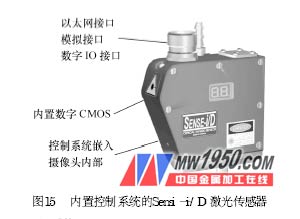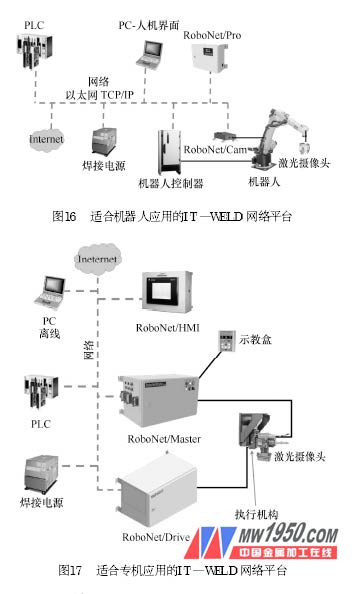(3) Sensor and controller integration With the development of electronic technology, the current laser vision sensing technology can integrate the controller part of the laser sensor into the sensor, thus making the laser vision sensing system more useful and maintenance. Simple while reducing costs. The Robo-Pal sensor in Figure 14 has integrated the system's control system. The control system of the Sense-i/D sensor shown in Figure 15 has also been embedded inside the sensor. The sensor can provide an analog interface, a digital IO interface and an Ethernet interface, which can be easily integrated with a robot or a special machine. 7. Miniaturization In many automated welding applications, the shape of the workpiece or the fixture is complex, which reduces the accessibility of the torch. Therefore, it is desirable that the smaller the size of the sensor, the better. With the increase in integration, many small-volume sensors have emerged. The current smallest laser vision sensor, including the anti-splash protection device, is only 35mm × 34mm × 125mm. 8. Networking With the development and promotion of advanced manufacturing ideas such as lean production and network manufacturing, manufacturers have more and more demand for equipment networking functions. Laser vision sensing has also evolved from the original stand-alone system to the network. The new laser sensor or system already has an industrial Ethernet interface, making it easy to form a networked manufacturing system with robots or CNC machines, PLCs, welding power supplies and PCs. Figure 16 and Figure 17 are the IT-WELDTM network platforms for robots and CNC planes, respectively. The IT-WELD network platform can drive multiple laser sensing heads to achieve networked laser vision and process control for intelligent manufacturing processes. Third, the conclusion Driven by market competition, the demand for sensing technology, quality monitoring and assurance technology in automated welding manufacturing processes is becoming more and more urgent. In many automated welding manufacturing applications, without sensors and automated inspection methods, production quality and cost will be unacceptable. The new laser vision sensing technology described above was developed in recent years to meet the needs of the automated welding process. In the fields of arc welding, laser welding and flame cutting or plasma cutting, they have provided many reliable industrial applications for the welding industry such as weld search positioning, weld tracking, adaptive control of welding parameters, weld formation and defect detection. . These new technologies will provide some new solutions or ideas for the automated welding manufacturing process. However, due to the complexity of the sensing and control of the welding process, even these newly developed laser vision sensing technologies are still difficult to fully meet the needs of a variety of welding processes. Therefore, there are still many companies or research institutions working on new, more reliable or lower cost sensing technologies and means. Previous page 

Advanced laser vision sensing technology and its application in welding (5)
